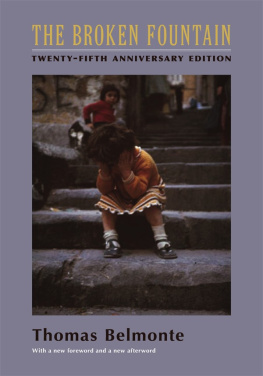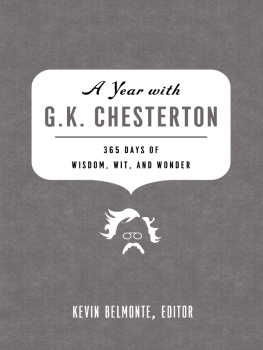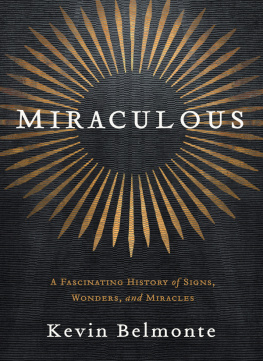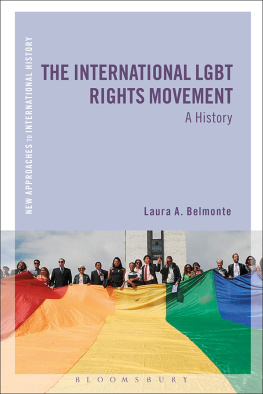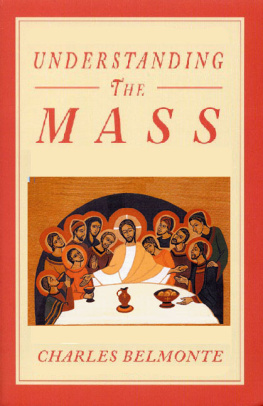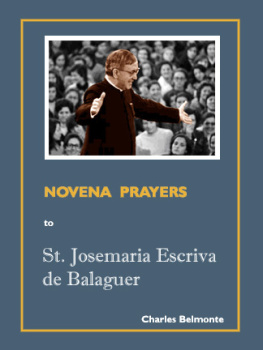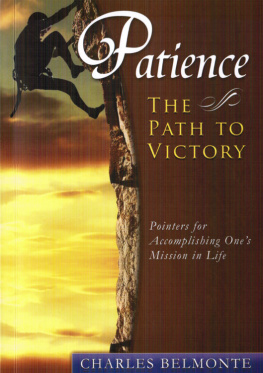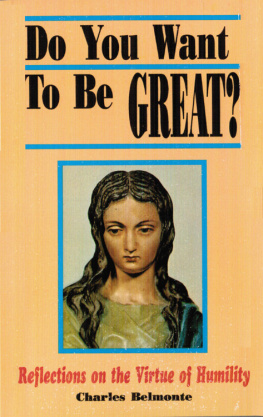Columbia Classics in Anthropology
This series celebrates the longstanding tradition of influential works in anthropology from Columbia University Press.
Yolanda and Robert F. Murphy, Women of the Forest, Thirtieth Anniversary Edition
Margaret Mead, Ruth Benedict, Thirtieth Anniversary Edition
Columbia University Press
Publishers Since 1893
New York Chichester, West Sussex
cup.columbia.edu
Copyright 1979, 1989, 2005 Columbia University Press
All rights reserved
E-ISBN 978-0-231-50108-8
Library of Congress Cataloging-in-Publication Data
Belmonte, Thomas, 1946
The broken fountain : twenty-fifth anniversary edition / Thomas Belmonte ; with a new foreword by Ida Susser and a new afterword by Pellegrino DAcierno and Stanislao Pugliese.2nd expanded ed.
p. cm.(Columbia classics in anthropology)
Includes bibliographical references and index.
ISBN 0231133715 (alk. paper)
1. Naples (Italy)Social conditions1945Case studies. 2. PoorItalyNaplesCase studies. 3. FamilyItalyNaplesCase studies. I. Title. II. Series.
HN488.N3B4 2005
306.094573dc22
2004061382
A Columbia University Press E-book.
CUP would be pleased to hear about your reading experience with this e-book at .
EVERYONE HAS PERHAPS seen those examples of anamorphic art, which engage the viewer with a seemingly inexplicable optical mystery. As a child, I recall being intrigued by an inexpensive print that hung in the hallway of my parents homea drawing of a young woman seated in front of a mirror. When regarded from another angle, this innocent portrait transformed itself into the chilling figure of a human skull. Contemplating it, I would blink my eyes repeatedly so as to summon forth the contrasting images in rapid alternation. But sometimes one of the images would remain stubbornly in place and no amount of blinking would bring the other into view. Then I would turn away, troubled and confused, not certain whether I or the print was to blame.
I think that some levels of social reality present similar dilemmas of perception and confidence to anthropological fieldworkers in foreign lands. I confess that I was baffled by the Neapolitans among whom I lived. No sooner would I discern a pattern in the chaos of shapes confronting me, than the design would rearrange itself into what looked like something else. In those rarer intervals when the line did not waver, I would scrutinize and mistrust it and wonder what was wrong.
The fieldworker lives among individuals, surrounded by the profusion of their idiosyncracies, and yet from his knowledge of their lives he must abstract social organization and write down in his notebooks the prescriptions of culture. But individuals do not simply receive and spout out a cultural legacy. They live with it and through it, suffering it or evading it, perhaps even creating it at critical psychohistorical junctures. The problem posed by Yeats and revived critically by Kenneth Burke still remains: How can we know the dancer from the dance? For all our increasing sophistication as social scientists, as plotters and analysts of behavior, we have yet to demonstrate how the rather stolid architecture of culture houses the anarchy of motives which is perhaps the essence of human experience.
When we study human beings we risk a problematical relationship with them. As in all other human relationships, a stance of pure objectivity (eliminating the self) is as destructive to communication as is a stance of pure subjectivity (eliminating the other). If cultural anthropology ceases to rely for insight upon an ongoing dialogue in which subject and object constantly change places and reverse roles, it will become a barren technic, a dried husk of what C. Wright Mills called abstracted empiricism.
Although this study seeks to explore an ethnographic frontier, it does not pretend to do so in a theoretical or a moral-philosophical vacuum. The data is presented and analyzed in a mode consistent with the authors reading of history and provisional understanding of social structure. This view emphasizes the emergence of stratification as the pivot upon which all recent history turns and sees wealth, poverty, and alienation as the crucial components of a complex cybernetic process.
The method of field research was pure participant observation and is described in greater detail in the first chapter. I learned about lower-class Neapolitans by living with them. I came to know them slowly and haltingly. As they gradually put more trust in me, they let me know them better. My approach was not to dig and hunt for data, in structured, methodical ways, but to watch for it and to wait for it, as I navigated my way through what was essentially an exotic milieu. Participant observation was a means to an end, but it was also an end in itself. It was an immersion in otherness, a prolonged listening, an alteration of self.
The method has conditioned the result, expanding some horizons and limiting others. The book concentrates primarily on those arenas of social life to which I had access in an all too brief year of field research. These are economy, community, and family. Politics is dealt with in summary fashion, while religion, education, the media, and other areas of culture (such as folklore and music) are not treated in any systematic way. I regret these lacunae but hope that others will aid me in filling them in. I think it important that a majority of my informants were male. Nevertheless, I do not think that the view of social life presented here is invalidated by this fact, although a complementary study from the female side of the system would certainly go far toward rounding out our understanding of social life among the Neapolitan poor.
Finally, I would caution the reader that he or she will find no neatly prepared and preserved specimen in the pages that follow. I have made no attempt to drain the blood out of the individuals and scenes, the fears, the conflicts, and the pleasures by which my knowledge of social life among the Neapolitan poor was gained.
A BOOK, IF it is to be more than a manual or a bulletin, must always manifest the peculiar quality of the authors life as it has involved others. As I read through these pages I see, as the reader cannot, the faces of teachers and friends who encouraged and challenged me and sometimes winced. Had they not cared about this project, I know that I should never have completed it.
First thanks go to my mother and father, Vito and Theodora Belmonte, who never questioned the arduous and strange manner of my return to the land of our ancestors. Always somewhere in the background, silently, they stood by me from start to finish, and for this I am deeply grateful.
As an anthropologist I have been fortunate in having had fine teachers. This book, I hope, will reflect the spirit of the anthropology which they taught me. Alexander Lesser, by his own example, taught me a science which was objective and compassionate at once; and up until her recent death, Gitel Steed provided a spiritual hearth and gave generously the solace of her wisdom. At Columbia University I was apprenticed to the master craftsmen of my profession. From Conrad Arensberg I learned how to appreciate the manifold intricacies of culture history, while searching for order and broad pattern in human affairs. Morton Fried tutored me in political economy and grounded my understandings in a materialism that was effortlessly a humanism. Robert Murphy stood everything else I had learned on its head, exposing in his subtle paradoxes the tragicomedies of social life and individual destiny. To these dear teachers, I must acknowledge lifelong debts of heart and mind.

